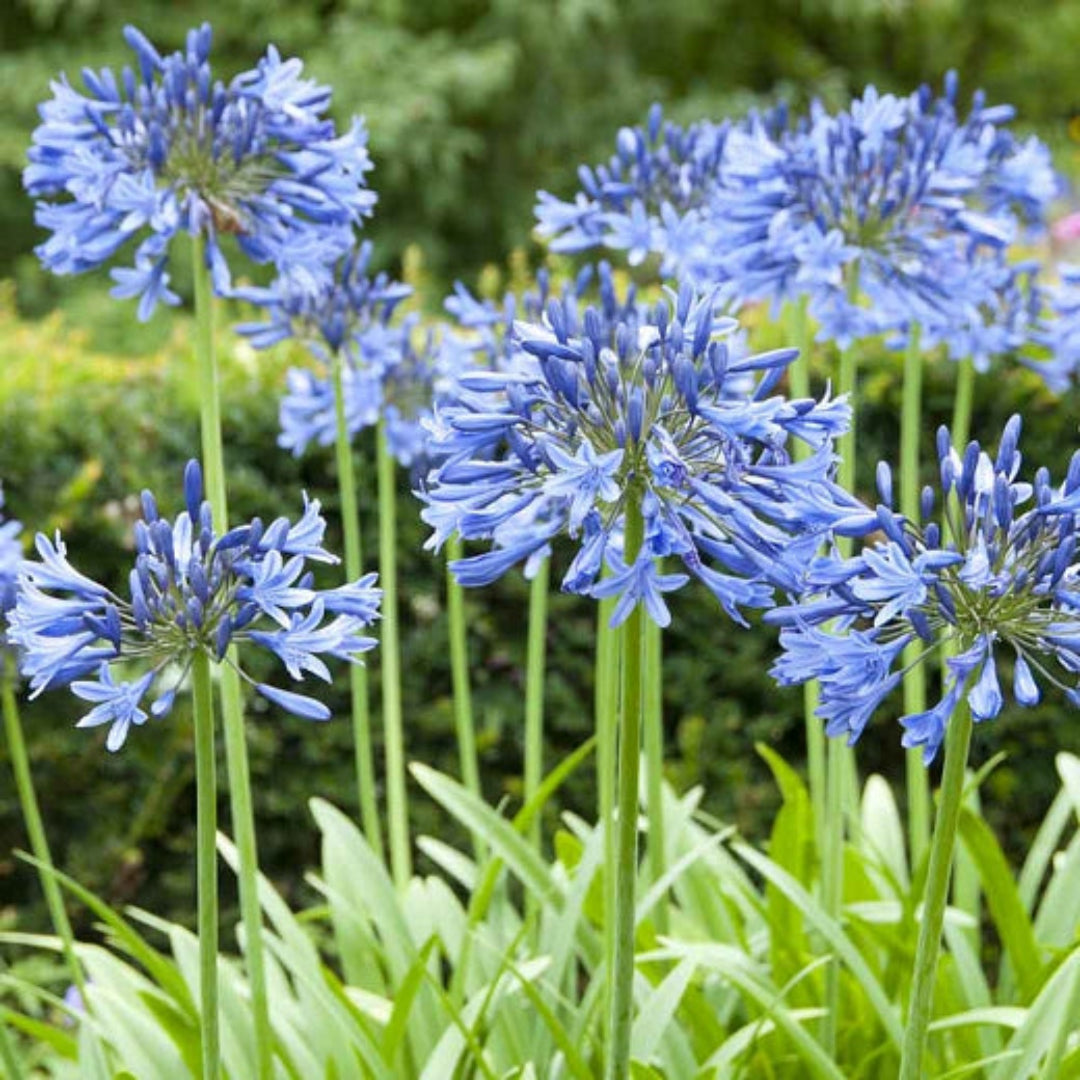Agapanthus Growing Conditions: Dirt, Sunshine, and Watering
Agapanthus Growing Conditions: Dirt, Sunshine, and Watering
Blog Article
Understanding the Art of Agapanthus Treatment: Necessary Actions for Healthy Development and Vibrant Flowers
In the world of cultivation, the growing of agapanthus stands as a satisfying endeavor for those who look for to support these stylish flowering plants. From picking the right selection to understanding pruning methods, the journey towards growing growing agapanthus plants is complex and holds the vital to unlocking the full potential of these herb gems.
:strip_icc()/agapanthus-africanus-b959396b-5696f86e059c46f299d1834ba687c6eb.jpg)
Selecting the Right Agapanthus Range

When selecting the best Agapanthus variety for your yard, take into consideration variables such as environment suitability, bloom shade, and development routine. Furthermore, take into consideration the environment in your area to make certain the Agapanthus range you select can grow in your particular conditions. Recognizing the growth behavior of different Agapanthus selections is critical for appropriate positioning within your garden.
Ideal Growing Conditions
Thinking about the optimal environmental requirements is essential for successful Agapanthus farming. Agapanthus flourishes in well-draining soil with a slightly acidic to neutral pH degree. When planting, pick an area that gets complete sunshine to partial color. In hotter environments, providing some mid-day color can avoid scorching of the fallen leaves. Agapanthus plants are sensitive to chilly temperature levels and should be secured from frost during cold weather.
To make certain healthy and balanced development and dynamic blossoms, plant Agapanthus light bulbs at a deepness of regarding 2-4 inches and space them 8-12 inches apart. Adding raw material, such as compost, to the dirt can enhance drain and fertility, advertising robust root development. Mulching around the base of the plants aids preserve dampness and subdues weed development. Regular watering is essential, particularly during the growing period, to keep the soil continually wet however not soaked.
Watering and Feeding Tips
Preserving proper dampness levels and offering crucial nutrients are crucial elements in the treatment regimen for Agapanthus plants. It is important to strike an equilibrium when it comes to sprinkling Agapanthus. If overwatered, these plants choose continually damp dirt but are at risk to root rot. During the expanding season, water deeply when a week, making sure the soil is well-draining to stop waterlogging. In hotter climates or throughout durations of drought, even more frequent watering may be essential to maintain the soil evenly damp. Nonetheless, reduce watering in the winter to avoid waterlogged conditions.
Feeding Agapanthus is necessary for advertising healthy and balanced development and respected blooms. Apply a balanced fertilizer, such as a 10-10-10 formula, in the early spring as brand-new development arises. By adhering to these watering and feeding suggestions, you can guarantee your Agapanthus plants prosper and create lively, resilient blossoms.
Trimming Strategies for Agapanthus
Trimming Agapanthus plants at see this the proper times and with appropriate methods is vital for preserving their health and wellness and promoting ideal our website growth and blooming. The ideal time to trim Agapanthus remains in late winter or very early springtime before brand-new development emerges. Begin by eliminating any type of dead or yellowing leaves near the base of the plant. Cut them as close to the ground as possible without damaging the emerging shoots.
Deadheading spent blossoms can likewise reroute the plant's energy into generating more flowers instead than setting seeds. If you desire to collect seeds for breeding, leave some flowers to dry and fully grown on the plant.
Remember to utilize tidy, sharp devices to make specific cuts and decrease the danger of presenting diseases. Agapanthus. Routine trimming will assist maintain your Agapanthus looking neat and healthy while ensuring a plentiful display screen of lovely blooms
Taking Care Of Typical Insects and Illness
After making certain proper trimming techniques for Agapanthus, it is vital to resolve usual insects and diseases that can impact the health and vigor of these plants. Agapanthus plants are generally hardy however can still succumb to specific problems. One common parasite that impacts Agapanthus is the Agapanthus gall midget. This tiny, orange fly lays its eggs in the foliage, leading to distorted growth and flower buds that fall short to open up. To battle this bug, trim and ruin any check my site affected plant components and think about using insecticidal soap.
Additionally, Agapanthus plants can suffer from origin rot if they are grown in poorly draining soil. By being vigilant and taking prompt action against conditions and insects, you can help your Agapanthus plants prosper and generate dynamic blossoms. Agapanthus.

Final Thought
In conclusion, mastering the art of agapanthus care involves picking the right selection, giving perfect planting conditions, appropriate watering and fertilizing, proper trimming methods, and attending to typical pests and conditions. By complying with these necessary steps, you can make sure healthy and balanced growth and dynamic flowers for your agapanthus plants. Keep in mind to consistently check and preserve your plants to promote their general well-being and longevity.
To make certain healthy growth and dynamic blooms, plant Agapanthus bulbs at a deepness of regarding 2-4 inches and area them 8-12 inches apart. By complying with these watering and fertilizing tips, you can guarantee your Agapanthus plants prosper and create dynamic, resilient blossoms.
One typical insect that influences Agapanthus is the Agapanthus gall midget. Furthermore, Agapanthus plants can suffer from origin rot if they are grown in improperly draining soil. By adhering to these vital steps, you can ensure healthy and balanced growth and vibrant flowers for your agapanthus plants.
Report this page